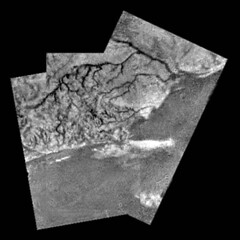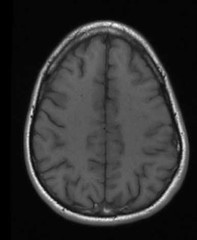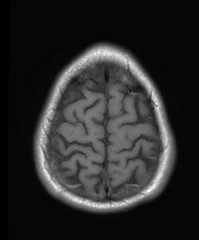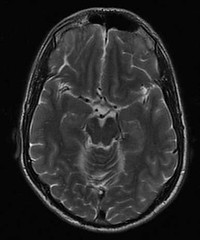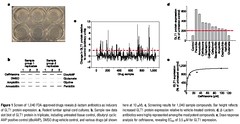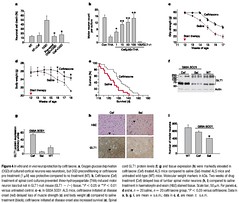Laminate this
I have never had fasciculations or weird muscle behavior in my rear neck muscle, the one that keeps the head up, but I have had them for several days this week. Does this freak me? Oh yes, it does. It's a sign of getting ready to die. No thank you.
We saw 'Minority Report,' for the first time, on DVD last night. This ALS thingy begins to become increasingly urgent and bizarre. It's like science fiction. Soon I am going to try powerful drugs. I'm not getting a new set of eyes and hiding in an ice bath, but it feels like that.
I'm going to print this, laminate it, and attach it to my key ring. Just in case:
I'm not drunk; I'm disabled. I'm not retarded; I can understand what you say. (Flip card, please)
I am not drunk or retarded. I have a disability that makes it difficult for me to walk and talk. But I am very intelligent and I can understand what you say. If you will be patient, I can communicate with you. My doctor is Dr. XXXX XXXXXXXXX, (000) 000-0000.
Pants update: I washed the Levi's on hot and dried them on hot, twice. The new ones (32W 36L) fit without a belt. The two I got a few weeks back can kinda stay up without a belt, but they feel more secure with one. Satisfactory. The pile of old jeans with holes in the knees can now stand down from duty. With respect, they are shown to the right.
Social Security update: I am in the process of completing my Social Security benefits application. I finally called the local office to complete the one I started online in November. The nice man sent me some forms to fill out. Yes, I know it's been over a year since my diagnosis and I should have done this in the first month. But I did what I wanted to. Call me lazy; It's true.
My daughter got her first pair of ruby slippers. See picture at right. They were a hand-off from a friend who outgrew them.
Here are a couple of URLs describing long-term beta-lactam treatment. All of these drugs should act on GTP1, per the 1/6/05 piece in Nature. The first URL mentions use of ceftriaxone for three weeks.
The second URL mentions use of amoxycilan for 26 weeks. No neurological problems are mentioned in either case, as far as I can tell from skimming.
So it looks increasingly like the risks I face are the standard ones, diarrhea, colitis, or the Jarisch-Herxheimer reaction, if indeed I do turn out to have Lyme.
I bought a hand dynamometer on eBay the other day, for testing my grip strength. Hopefully it will arrive before we start the Ceftriaxone Wednesday. Also, I ordered probiotics over the internet yesterday. A friend of my local neurologist's has had success with probitoics (friendly bacteria found in the body naturally). Based on what he says here, I may be able to go to a fancy health food store and walk out with what I want:
I use Garden of Life (Company) "Primal Defense" Probiotic formula (90 caplets to a bottle). It also can be taken in powder form. Both need to be refrigerated. It should be in a refrigerator section of the health food store and then in your refrigerator at home. It is a culture of 14 probiotic sources and is delicate. Once swallowed, it lasts 72 hours but needs to be replenished daily. These days I take only one per day but postop I took 3 at night & 3 in the morning. Most lactobacillus products will help digestion but do not much more. This one is strong and diverse enough to block many opportunistic bacterial invasions following the disabling of an immune system by massive antibiotics and/or excessive radiation.
9:07 AM: I just got back from a local health food store with the exact brand of probiotics the guy mentioned. I downed three caplets right away. And the bottle is in my refrigerator. Yay!
I also just ordered some glyconutrients. It may be just way to sell you expensive sugar, but it at least has plausibility. Unlike homeopathy. But it looks like I'm going to be getting that for free. Which is what it seems to be worth.
11:27 AM: Every single time, I think I am going to make a sort quip and be gone, but it usually turns into a tome. So after I scored the probiotics and ordered the glyconutrients, I went to pick up my prescription of the obscenely expensive, barely effective drug riluzole, which usually costs me $15, and the lady said, "Wow, this is really expensive," to which I said, "Yeah, but my insurance covers that." Then she asked me for $8.23. Or at least I thought she did. What she really said was $823.59. Still thinking there had been some price break from $15 to $8, I said "But it's usually $15." She checked again, and said that my prescription had been rejected by a third party. I asked her for a printout, and she gave me one. It does not even say what third party. If this had happened a year ago I would have been super-stressed right now, angry, jittery, sweating, hot. As it is, I could almost not care less. I know that riluzole doesn't help people, and I plan to start ceftriaxone, acupuncture, probiotics (started!), glyconutrients, and homeopathy this week. But I did send an email and leave a voicemail for the useless ALS clinic, as well as leave a voicemail with my employer, in case they are the third party. I have recently begun making payments to them to pick up my part of the insurance, so I assume my status has changed in some way. Or maybe it is because my employer was purchased by a larger company, which switched us over to an equivalent, but new, health plan. I bet that's it. The pharmacy is probably running the pill deal off of the old policy, which is kaput now. Whatever; riluzole is useless.
She was being nice and just doing her job, but she also asked me to sign off that I had read the privacy policy. This is the policy where you must agree that they will violate your privacy. I had to ask her twice for a copy of the policy before she understood. She looked around and had trouble finding it. I may have been the first person to ever ask to read it.
3:53 PM: Yep, the change in plans was the problem. Now I have the pills. Under the new, improved plan my co-pay goes up from $15 to $50. I'd say this drug is worth about $27.95.
9:18 PM: Just got both kids to bed. Phew! Did I forget to mention that I got my first accupuncture today? The needles are so tiny it's hard to detect them. Acupuncture has some plausibility, and quite a history. And it can't hurt to listen to Joni Mitchell.






